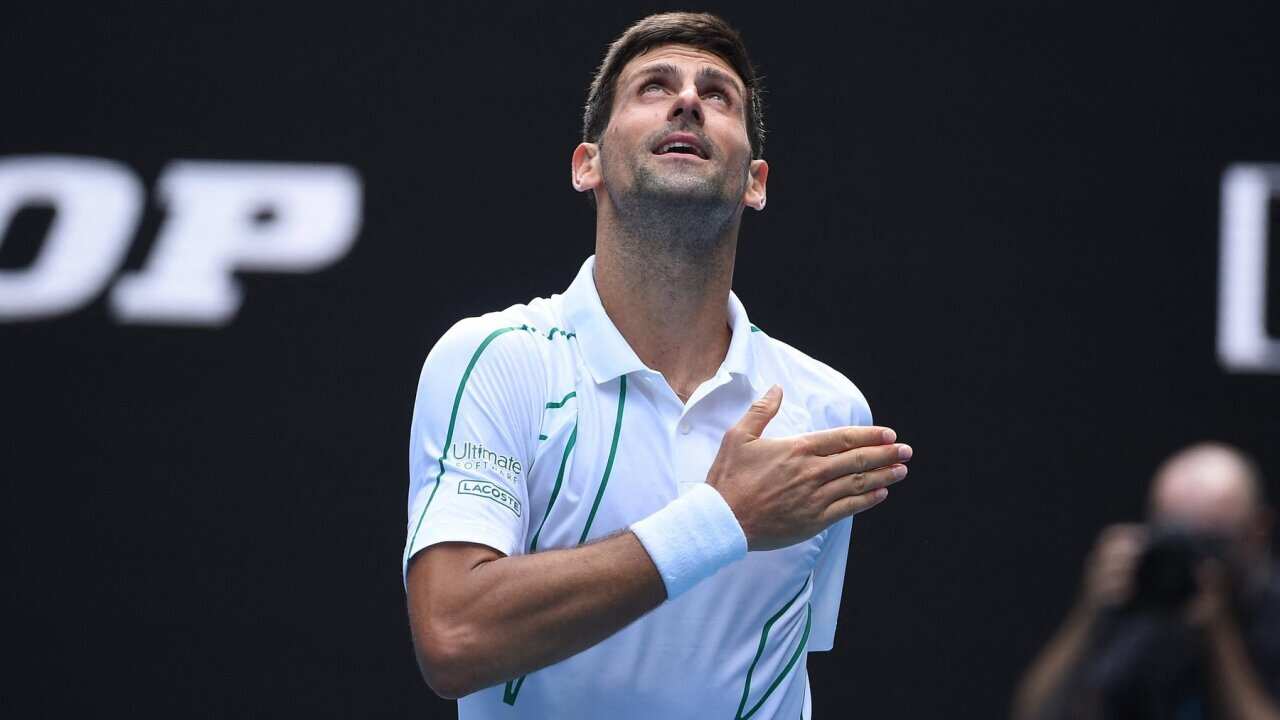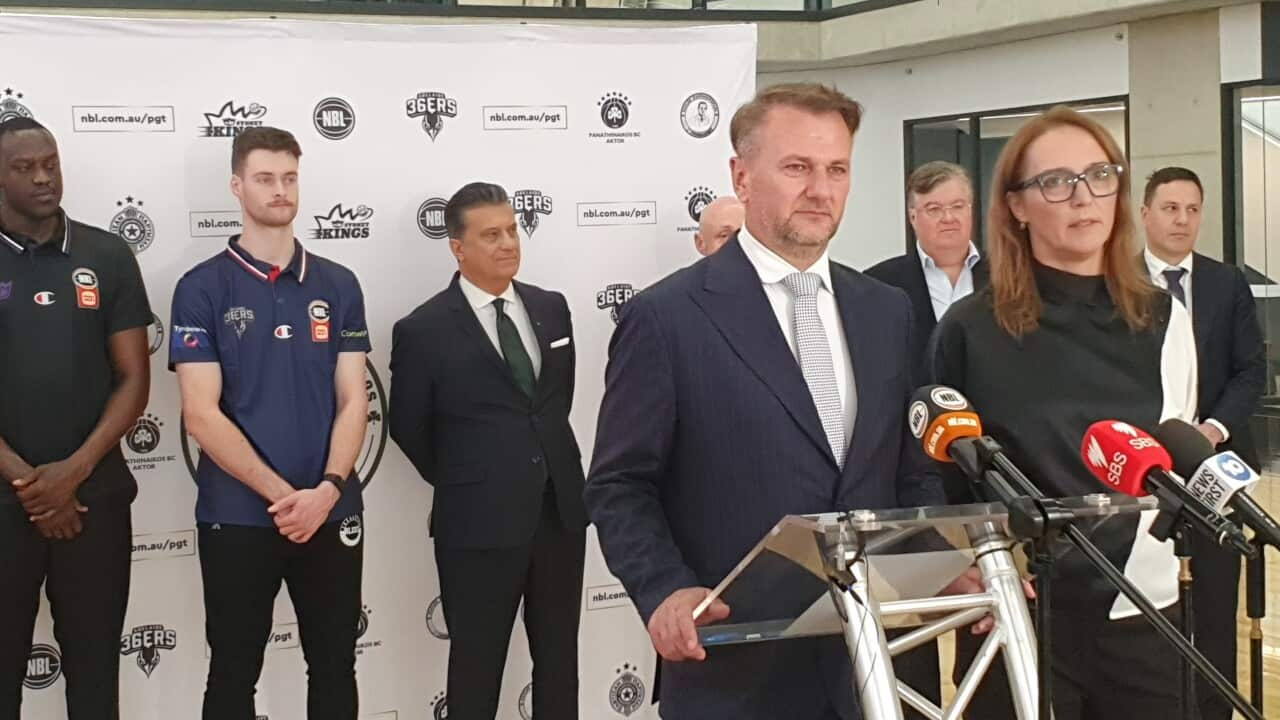After his match, Hamad Medjedović patiently waited for media on the stairs of the players' exit tunnel. We, the media, were late because of Novak Djoković's press conference, but the 15- year old tennis player didn't seem to mind.
Bag on his shoulder, towel still wrapped around him, he shook all of our hands enthusiastically and introduced himself.
He'd just won the first round of the Junior Boys Australian Open tournament, and was feeling confident about the upcoming tennis season.
There isn't much fanfare surrounding unknown, junior players. It isn't really a star treatment standing at the bottom of a few concrete steps, still sweaty with five microphones in your face. No security escort around you. A far cry from the controlled press conference environment of the 'top 10'.
Medjedović is humble, well spoken and determined to make it big. He tells us that the nerves from his last junior slam, the US open, are gone and that he's ready for the year ahead.
"I can't say there were no nerves at all going into the match, but definitely less than in New York (for the US Open). I think this time I knew I'd been through it before, so it helped me focus on the technique and the tennis."
Unfortunately, spotting and growing talent in Serbia isn't as easy as in other parts of the world.
Moments before we spoke to Medjedović, world number two player, Novak Djoković, told media Serbian tennis still had a long way to go.
While there is no doubt that Djoković's success has impacted the popularity of tennis among Serbs, the cost and structure of the sport doesn't make it accessible for the vast majority of children in Serbia.
“It obviously helps when you have a success on a global level,” said Djoković. “Of course, it has a very positive impact in your country. Serbia didn't really have a successful or long tennis tradition before Bobo Zivojinović and Monica Seleš. That was probably the first generation of successful tennis players coming from our country.
“Then really all of a sudden, I don't believe in coincidences in life, but it looked very much like a coincidence because there was no system or structure that supported our breakthrough to professional tennis, but in one moment we had three No. 1's of the world [with] Ana Ivanović [and] Jelena Janković on the women's side. Four actually, doubles, Nenad Zimojnić, as well. Janko Tipsarević [was in the] Top 10.
“It was an amazing decade for our tennis. That obviously helped the popularity of the sport in our country. There was a lot of interest, a lot of young people choosing to grab a tennis racquet.”
While Serbian children have no shortage of tennis idols, they unfortunately have a shortage of resources. Lack of structure in the industry, as well as high costs, has made it difficult for families to persevere with tennis.
“The problem that we have is still the infrastructure, but it's also the system that hasn't really followed the success as well as it should have,” said Djoković. “I do consider myself also responsible to try to do something when I'm not playing.
“Through the tennis club that we are running in Belgrade, through my free time, I try to help the federation… to establish some system that will be a long-standing, long-term system that will allow kids and parents to have an easier access to tennis, cheaper access to tennis, racquets, tennis courts, things like this.
“For an average family in Serbia, it's really expensive to play tennis. That's the reality. They will most likely choose — if it comes down to economics — basketball, football, handball or volleyball. Those are really successful sports in our country… We still have a lot of work to do to get actually, on the grassroot level, more players.”
In the meantime, Hamad Medjedović is forging his path as best he can.
"I think I am well prepared. This year I am moving toward the more professional tournaments, I'm confident. I think I'll have a good year," says Medjedović.
This podcast is in Serbian! Don't forget to click the cover photo and listen in language.




